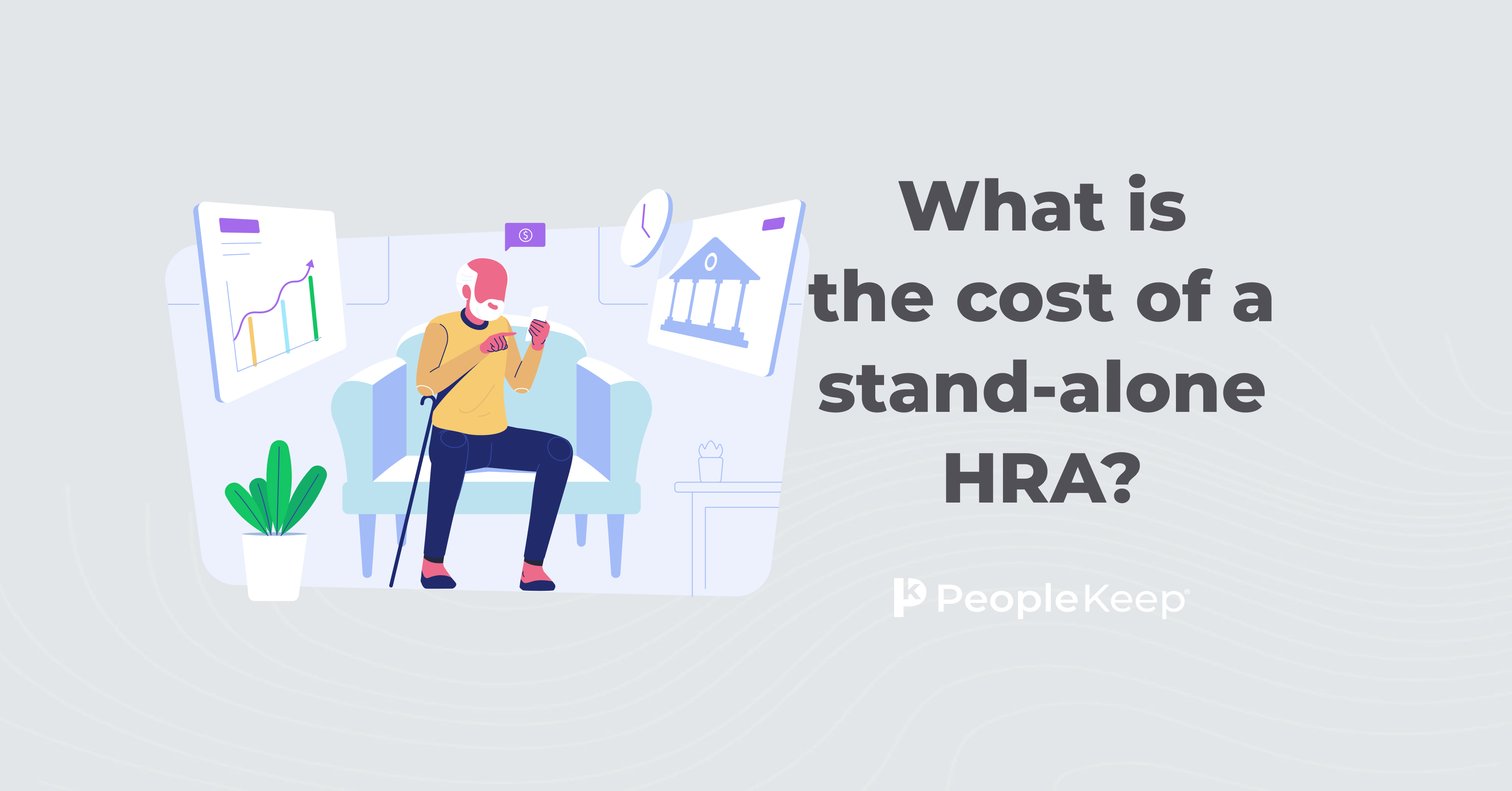QSEHRA rules you need to know
By Holly Bengfort on August 28, 2024 at 11:20 AM
Offering competitive benefits is essential for attracting and keeping the best employees. But if you’re a small employer, you may think quality employee benefits are out of reach. That’s not the case with the qualified small employer health reimbursement arrangement (QSEHRA). With the QSEHRA, you can provide health benefits to your workforce in a tax-efficient manner. However, failure to comply with the rules governing this arrangement can lead to costly penalties and legal implications.
In this article, we'll review the specific rules and guidelines for offering a QSEHRA.
In this blog post, you'll learn the following:
- Why a QSEHRA is an ideal health insurance benefit for small employers.
- How the QSEHRA allows you to provide tax-free reimbursements to cover your employees' individual health insurance coverage and other medical care expenses.
- How much you can offer your employees as a monthly allowance.
What is a QSEHRA?
Congress created the QSEHRA, also known as the small business HRA, in 2016. Offering a QSEHRA is a great way to help your employees with their out-of-pocket medical costs without having to buy traditional group health insurance. With this tax-free health benefit, you simply reimburse your employees for their individual health insurance plan premiums and other eligible medical expenses.
Here’s how this simple, five-step process works:
- You set a monthly allowance for your employees to spend on healthcare expenses.
- If your employees don’t have a health insurance policy that meets minimum essential coverage (MEC), they need to buy one to participate in a QSEHRA. This is easy to do since offering a QSEHRA creates a 60-day special enrollment period. They can purchase qualified health plans on the Health Insurance Marketplace or with the help of a broker. Employees must provide proof of coverage to establish their eligibility.
- Employees make healthcare purchases using their own money.
- After incurring an eligible expense, your employees submit proof of their purchases to you or your HRA administrator. This is usually a receipt or an explanation of benefits from the insurance company.
- Once you or your HRA administrator approves the expense, you reimburse your employee up to their allowance amount. Reimbursements are free of income and payroll taxes.
Who can participate in a QSEHRA?
The QSEHRA is only for small businesses. That means only employers with fewer than 50 full-time equivalent employees (FTEs) can offer a QSEHRA. You must have at least one W-2 employee and offer the benefit to all full-time employees at your organization.
You can also choose to include your W-2 part-time employees. If you want, you can exclude seasonal employees. But if you choose to include part-timer workers, you need to offer them the same allowance as your full-time employees. Independent contractors and international workers aren’t eligible for a QSEHRA.
You also can’t offer a QSEHRA alongside any traditional group health plan. This includes dental or vision plans. If you currently offer a group health insurance policy, you can cancel it and offer a QSEHRA instead.
Business owner eligibility under a QSEHRA
If you want to take advantage of a QSEHRA as a small business owner, your eligibility depends on how your company is set up.
|
Type of business owner |
QSEHRA eligibility |
|
C corporation owners |
The IRS recognizes C corp owners as common-law employees of the corporation. This allows them and their family members to participate in a QSEHRA. |
|
S corporation owners |
An S corp is a pass-through entity. The IRS taxes business owners and shareholders directly instead of the business. If you’re a shareholder with more than 2% of shares of an S corp, you can’t participate in a QSEHRA. |
|
Partners |
Partners can’t participate in a QSEHRA since the federal government taxes them directly. But, they may be able to participate through their spouse if they’re a W-2 employee of the business. |
|
Sole proprietors |
Sole proprietors can’t participate in a QSEHRA. However, they may be able to participate in the benefit if their spouse is a W-2 employee of the business. |
What expenses are eligible for reimbursement with a QSEHRA?
With a QSEHRA, you can reimburse your eligible employees for more than 200 types of eligible medical expenses.
Here are a few examples of what medical expenses you can reimburse:
- Individual health insurance premiums
- Dental plan premiums/dental care
- Vision plan premiums/vision care
- Over-the-counter drugs
- Prescription drugs
- Doctor visits
- Chiropractic care
- Mental health counseling
You can also customize which expenses are eligible for reimbursement. You can offer a premium-only QSEHRA, which only reimburses employees for insurance premiums, or you can offer a QSEHRA that reimburses premiums and other out-of-pocket expenses.
How much can you offer as an allowance with a QSEHRA?
The QSEHRA doesn't have minimum employer contribution requirements, allowing you to provide this benefit to your employees regardless of your budget. You can also customize monthly allowances based on employee age and family size. Plus, any unused amounts at the end of the plan year stay with you. But, the IRS caps maximum annual contributions.
A QSEHRA must be employer-funded. This means employees can’t contribute to QSEHRA allowances.
Is a QSEHRA use it or lose it?
The IRS allows unused amounts of a QSEHRA allowance to roll over monthly and yearly. If you choose to have an annual rollover, the amount that’s rolled over from the previous year combined with the allowance offered for the current year can’t exceed the IRS maximum allowance. If you offer a QSEHRA with PeopleKeep, only month-to-month carryover amounts are allowed.
What are the reporting requirements with a QSEHRA?
If you offer health coverage through a QSEHRA, you need to report the benefit on every eligible employee's Form W-2 in box 12. You do this regardless of whether employees actually used the benefit. Additionally, you must provide written notice to all eligible employees at least 90 days before the beginning of the plan year or before the date the employee becomes eligible.
You also need to create your QSEHRA plan documents. These documents include specific information describing the benefit you're offering in detail to comply with federal regulations.
Here are the ten requirements you need to include in your QSEHRA plan documents:
- Named fiduciaries and plan administrators and their responsibilities
- Eligibility requirements for the QSEHRA
- Effective dates of participation
- Description of benefits provided and excluded
- How you fund the QSEHRA, and how it makes payments
- Claims procedures that comply with the U.S. Department of Labor regulations
- HIPAA privacy officers and rules relating to the use of protected health information (PHI)
- Information on federal mandates
- The procedure for amending the plan
- The procedure for plan termination
Do your employees qualify for savings on Marketplace coverage if you provide them with a QSEHRA?
When offering a QSEHRA, it's important to consider employees with premium tax credits. Eligible employees can only collect premium tax credits if their QSEHRA allowance isn't considered affordable. If an employee’s allowance is unaffordable and they collect tax credits, they must inform their federal or state exchange about the QSEHRA benefit. This is because they must reduce their tax credit dollar for dollar by their QSEHRA allowance.
Are there other types of HRAs available?
If the QSEHRA doesn't sound right for you, you still have options.
PeopleKeep can help you offer two other types of HRAs:
- The individual coverage HRA (ICHRA): Eligible employers can use an ICHRA to reimburse employees for individual health plans and medical expenses. Unlike the QSEHRA, this ICHRA works for employers of all sizes. It has no annual maximum for employer contributions. You can also customize benefit eligibility and allowances based on employee classes.
- The group coverage HRA (GCHRA): The GCHRA, or integrated HRA, works alongside a group medical plan. While you can’t reimburse employees for insurance premiums with a GCHRA, you can reimburse them for their out-of-pocket costs. Employees need to enroll in your group plan to participate in a GCHRA.
Conclusion
The QSERHA is a budget-friendly healthcare benefit that allows small employers to reimburse employees for their eligible health expenses. It's important to familiarize yourself with these QSEHRA rules and guidelines to ensure compliance with IRS regulations and to provide your workforce with a valuable employee benefit. For additional guidance, consult with an HRA advisor or legal professional to better understand the requirements and implications of offering a QSEHRA as an employer.
If you're interested in offering a QSEHRA or another type of HRA to your employees, PeopleKeep can help! Our HRA administration software makes it easy for organizations like yours to set up and manage their benefits in minutes each month.
Check out more resources
See these related articles

How the QSEHRA works for employees without minimum essential coverage
Curious about how a QSEHRA operates for employees without proof of minimum essential coverage? This article breaks down the details for you to understand.

What is a QSEHRA?
Looking for information on QSEHRAs? This guide provides a clear understanding of qualified small employer health reimbursement arrangements (QSEHRAs).

What is the cost of a stand-alone HRA?
Looking to budget for a stand-alone HRA? Get all the information you need on pricing and expenses in this comprehensive guide.



